
What is Companion Planting? Boost Your Garden's Health Naturally
Published: 29/08/2024 | Updated: 29/08/2024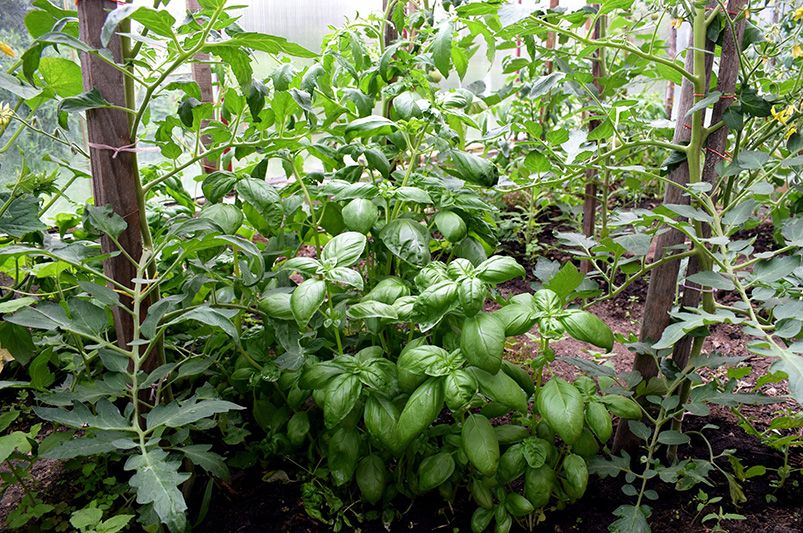
What is Companion Planting? Boost Your Garden's Health Naturally
Companion planting is a time-tested gardening technique that involves growing different plants together to enhance their growth, protect them from pests, and improve soil health. This method leverages the natural relationships between plants to create a more productive and sustainable garden. Whether you're an experienced gardener or just starting out, understanding the principles of companion planting can help you achieve a thriving and beautiful garden.


At ShrubHub, we are dedicated to helping you create the garden of your dreams. Our weekly blog articles provide pro tips, expert recommendations, and budget-friendly ideas on landscaping, complete yard renovations, and garden maintenance. Our talented group of design experts is here to guide you every step of the way. Visit shrubhub.com/blog for the latest insights and start transforming your garden today.
Let's dive into companion planting and discover how it can naturally boost your garden's health and productivity.
Understanding Companion Planting
Companion planting is a gardening technique that involves growing certain plants in proximity to each other to reap mutual benefits. This ancient practice, rooted in traditional agricultural methods, is based on the idea that some plants thrive better when they are grown together. At its core, companion planting is the strategic placement of plants to enhance growth, deter pests, and improve soil fertility. By carefully selecting plant combinations, gardeners can create a harmonious environment where plants support each other’s growth and health.
Companion planting has been used for centuries by various cultures around the world. Native American tribes, for example, practiced the “Three Sisters” method, where corn, beans, and squash were grown together. The corn provided a structure for the beans to climb, the beans fixed nitrogen in the soil, and the squash spread out to suppress weeds and retain moisture. This symbiotic relationship exemplifies the principles of companion planting and its benefits.
Basic Principles and How It Works
The success of companion planting lies in understanding the interactions between different plant species. Some plants release chemicals that repel pests, while others attract beneficial insects that prey on harmful ones. Certain plants can improve soil conditions by fixing nitrogen or enhancing nutrient availability. Additionally, companion planting can maximize space and reduce competition by pairing plants with different growth habits. By implementing companion planting techniques, you can create a more resilient and productive garden.
Benefits of Companion Planting
Companion planting offers numerous advantages that can transform your garden into a healthier and more productive space. By leveraging the natural relationships between plants, you can enjoy a range of benefits that enhance plant growth, protect against pests, and improve soil quality.
Natural Pest Control
One of the primary benefits of companion planting is its ability to naturally control pests. Certain plants emit scents or chemicals that repel insects, while others attract beneficial predators that feast on harmful pests. For example, marigolds are known to repel nematodes and other insects, making them an excellent companion for many vegetable crops. Similarly, planting basil near tomatoes can deter aphids, mosquitoes, and whiteflies.
Improved Soil Health
Companion planting can significantly improve soil health by enhancing nutrient availability and preventing soil depletion. Leguminous plants, such as beans and peas, fix nitrogen in the soil, providing an essential nutrient for many plants. Deep-rooted plants like comfrey can bring up nutrients from deeper soil layers, making them accessible to shallow-rooted companions. Additionally, ground covers like clover can prevent soil erosion and maintain soil structure.
Enhanced Plant Growth and Yields
By carefully selecting compatible plant combinations, you can boost overall plant growth and increase yields. Companion plants can provide shade, support, and protection, creating a more favorable growing environment. For instance, tall plants like corn can offer shade to sun-sensitive crops like lettuce, while climbing plants like beans can use corn stalks as natural supports. These synergistic relationships optimize space and resources, leading to healthier plants and higher productivity.
Biodiversity and Ecosystem Support
Companion planting promotes biodiversity in your garden, fostering a balanced ecosystem that supports various plant and animal species. Diverse plantings attract a wide range of pollinators, beneficial insects, and soil organisms, contributing to a healthier and more resilient garden. This biodiversity helps to maintain ecological balance, reducing the need for chemical interventions and promoting sustainable gardening practices.
Common Companion Planting Combinations
To get the most out of companion planting, it's important to know which plants work well together. Here are some classic and effective companion planting combinations that can help you create a more productive and harmonious garden.
Vegetables
Tomatoes and Basil
- Benefits: Basil helps repel aphids, mosquitoes, and whiteflies, while improving the flavor of tomatoes.
- Planting Tips: Plant basil around the base of tomato plants, ensuring they receive enough sunlight and water.
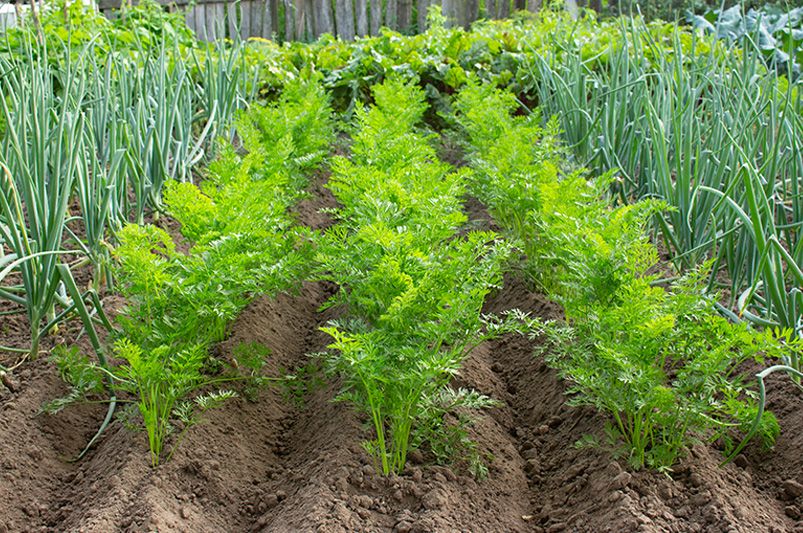
Carrots and Onions
- Benefits: Onions repel carrot flies, and carrots deter onion flies.
- Planting Tips: Intercrop carrots and onions in alternating rows to maximize pest control benefits.
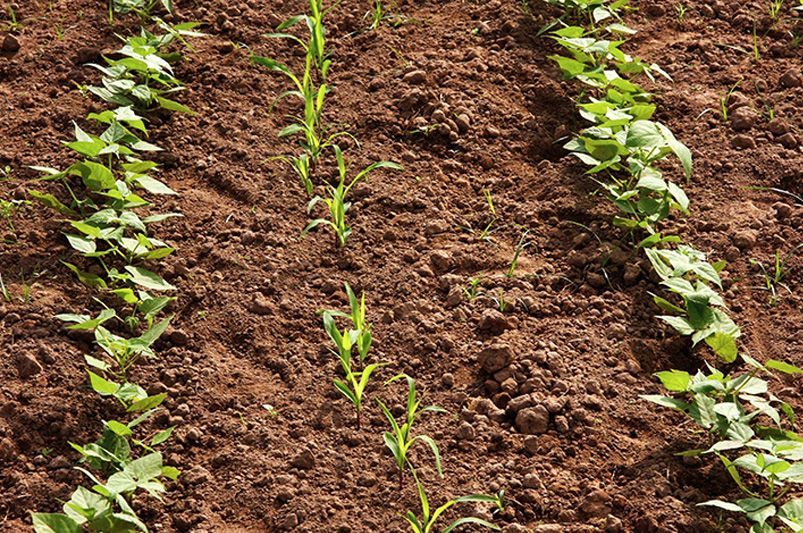
Beans and Corn
- Benefits: Beans fix nitrogen in the soil, benefiting corn, while corn provides support for climbing bean plants.
- Planting Tips: Plant corn first, and once it reaches a suitable height, sow beans around the base.
Flowers
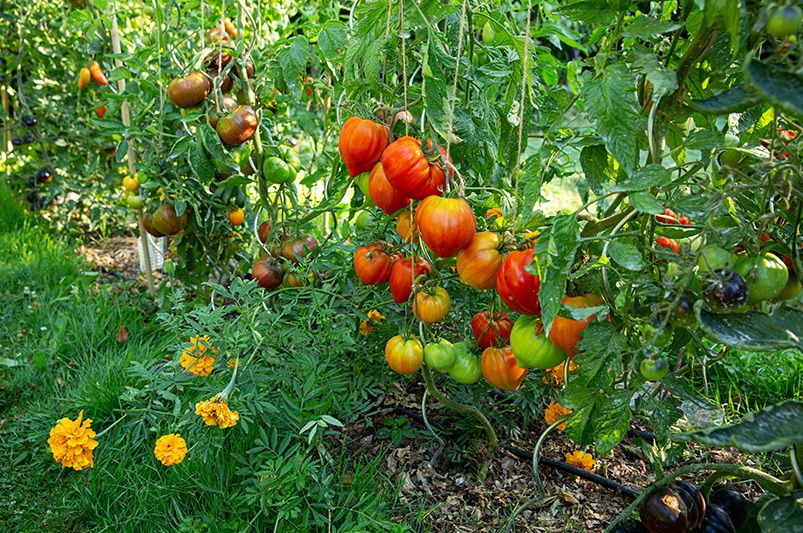
Marigolds and Tomatoes
- Benefits: Marigolds have a potent aroma that can deter pests such as tomato hornworms, whiteflies, thrips, and rabbits. Additionally, they can serve as a trap crop for slugs and snails, which are drawn to their foliage but often remain confined to the marigold plants, preventing them from spreading to other areas of your garden.
- Planting Tips: Plant marigolds in a circle around near base of tomato plants to create a protective barrier.
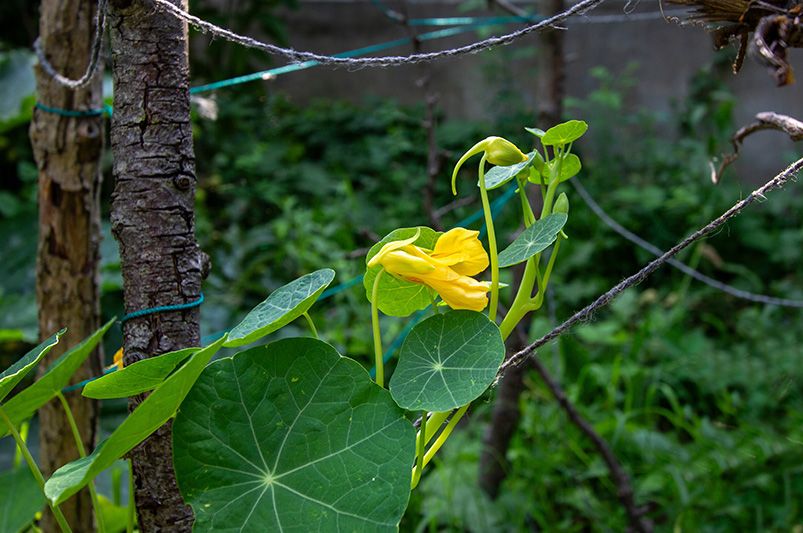
Nasturtiums and Cucumbers
- Benefits: Nasturtiums repel cucumber beetles and attract predatory insects that feed on aphids.
- Planting Tips: Plant nasturtiums as a border around cucumber beds or intersperse them among the cucumber plants.
Herbs
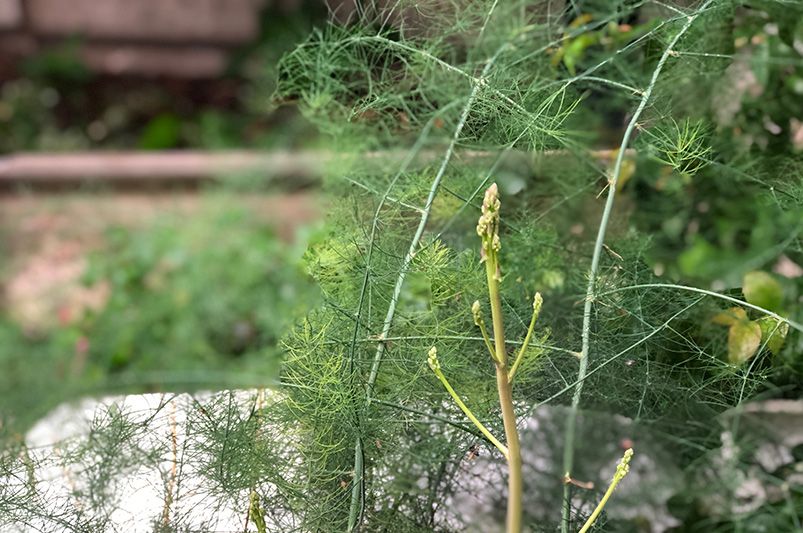
Dill and Asparagus
- Benefits: Planting dill alongside asparagus can help reduce pest populations and promote healthier asparagus growth. Dill attracts beneficial insects such as ladybugs and lacewings, which prey on asparagus beetles and aphids. Additionally, the aroma of dill acts as a natural repellent, helping to keep unwanted pests at bay.
- Planting Tips: Plant dill near the base of asparagus plants to enhance pest control.
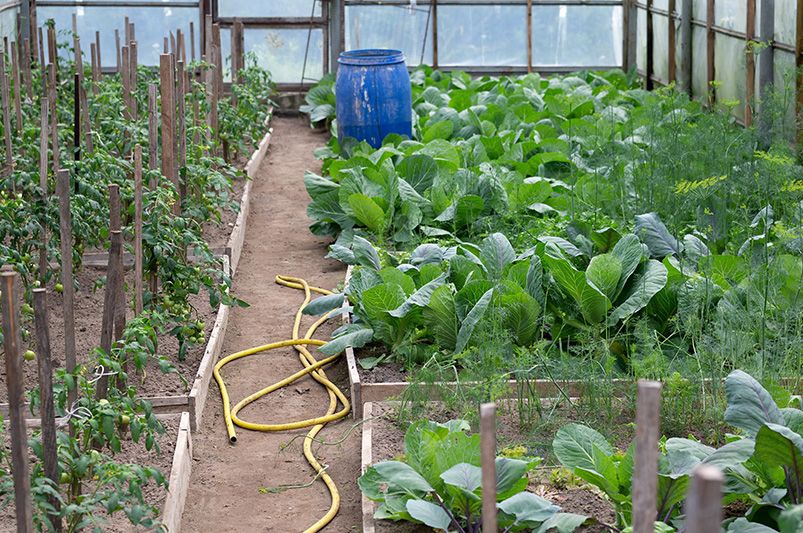
Dill and Cabbage
- Benefits: Dill attracts predatory wasps that feed on cabbage worms and other pests.
- Planting Tips: Plant dill around the perimeter of cabbage beds or intersperse it among the cabbage plants.
By using these companion planting combinations, you can create a garden that is more resilient to pests, has improved soil health, and produces higher yields. Experiment with different pairings to find what works best for your garden.

Tips for Successful Companion Planting
To make the most of companion planting, it's important to plan carefully and maintain your garden effectively. Here are some essential tips to help you achieve success with companion planting:
Planning Your Garden Layout
- Research Plant Combinations: Take time to research which plants work well together and which do not. Create a list of compatible plant pairings and plan your garden layout accordingly.
- Consider Planting Times: Ensure that the planting and harvesting times of your companion plants align. This will help you avoid overcrowding and competition for resources.
- Space Appropriately: Provide adequate space for each plant to grow. Overcrowding can lead to competition for nutrients, water, and sunlight, reducing the effectiveness of companion planting.
Choosing the Right Plant Combinations
- Match Growth Habits: Pair plants with complementary growth habits. For example, plant tall, sun-loving plants alongside shorter, shade-tolerant plants to maximize space and light utilization.
- Balance Nutrient Needs: Combine plants with different nutrient requirements to avoid depleting the soil. For instance, nitrogen-fixing legumes can be paired with nitrogen-demanding crops.
- Incorporate Pest Deterrents: Use plants that repel pests to protect vulnerable crops. Herbs like basil and dill, or flowers like marigolds, can be strategically placed to deter common garden pests.
Monitoring and Maintaining Your Garden
- Regular Inspection: Regularly inspect your garden for signs of pests, diseases, or nutrient deficiencies. Early detection allows for timely intervention and minimizes damage.
- Pruning and Thinning: Prune and thin your plants as needed to promote healthy growth and airflow. This helps prevent overcrowding and reduces the risk of disease.
- Rotate Crops: Practice crop rotation to prevent soil depletion and reduce the build-up of pests and diseases. Rotate companion plants to maintain soil health and biodiversity.
Common Mistakes to Avoid
- Ignoring Plant Compatibility: Avoid planting incompatible plants together, as they can negatively impact each other's growth. Always check for compatibility before planting.
- Overcrowding: Give each plant enough space to grow and thrive. Overcrowding can lead to competition for resources and increased susceptibility to pests and diseases.
- Neglecting Soil Health: Ensure your soil is rich in nutrients and organic matter. Regularly amend your soil with compost and other organic fertilizers to maintain its fertility.
By following these tips, you can create a successful companion planting garden that thrives with minimal intervention. Experiment with different combinations and observe how your plants interact to find the best pairings for your garden. For more expert advice and gardening tips, visit our blog at Shrubhub blog.
Conclusion
Companion planting is a powerful and natural way to enhance the health and productivity of your garden. By strategically pairing plants that support each other's growth, you can enjoy numerous benefits such as natural pest control, improved soil health, and higher yields. Whether you are growing vegetables, flowers, or herbs, companion planting can transform your gardening experience and create a more vibrant and sustainable garden.
At ShrubHub, we are dedicated to helping you achieve your gardening goals. Our expert services include 3D custom designs that allow you to visualize your dream garden and a wide variety of high-quality trees, shrubs, and groundcovers to suit your needs. We also offer shipping and delivery right to your doorstep, ensuring you have everything you need to create your ideal garden.
Ready to transform your garden with the benefits of companion planting and expert design services? Visit ShrubHub.com to explore our offerings and start creating the garden of your dreams today. Let ShrubHub be your partner in creating a beautiful, thriving garden that you can enjoy for years to come.


